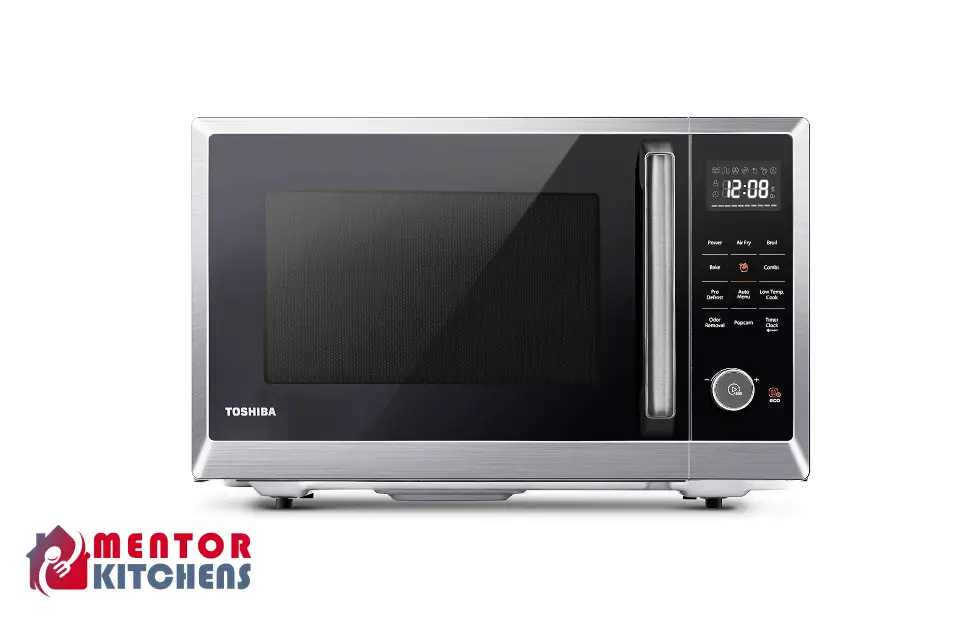If you’re experiencing issues with your Frigidaire dishwasher not draining properly, it can be frustrating and inconvenient. A dishwasher that doesn’t drain can leave you with standing water in the bottom of the tub, which can cause unpleasant odors and even damage to your dishwasher over time. Fortunately, there are a few things you can try to troubleshoot and fix the problem.
One of the most common causes of a Frigidaire dishwasher not draining is a clogged drain or filter. Over time, food particles, soap scum, and other debris can accumulate in the drain and filter, preventing water from flowing out of the dishwasher properly.
Another possible cause is a malfunctioning drain pump or motor, which can prevent water from being pumped out of the dishwasher at all. In some cases, a blocked air gap or garbage disposal can also cause drainage issues.

Understanding the Issue
If you have a Frigidaire dishwasher that is not draining, you may be frustrated and wondering what is causing the problem. The issue could be caused by a variety of factors, including lingering water, a blockage, or a faulty pump. In this section, we will explore some of the common causes of a Frigidaire dishwasher not draining and what you can do to fix the problem.
Lingering Water
One of the most common causes of a dishwasher not draining is lingering water in the bottom of the tub. This can be caused by a few different factors, including a clogged drain or a malfunctioning pump. If you notice that there is still water in the bottom of the dishwasher after a cycle has been completed, you may need to investigate further to determine the cause of the issue.
Not Draining
If your dishwasher is not draining at all, there may be a blockage in the drain hose or the garbage disposal. You can check for blockages by disconnecting the drain hose and inspecting it for any obstructions. You can also check the garbage disposal to see if there is anything blocking the drain.
Running Water
If your dishwasher is running but not draining, there may be an issue with the pump or the motor. If the pump is not working properly, it may not be able to pump water out of the dishwasher. You can check the pump by removing the bottom panel of the dishwasher and inspecting it for any signs of damage or wear.
Examining the Drain Hose
If your Frigidaire dishwasher is not draining properly, one of the first things to check is the drain hose. The drain hose is responsible for carrying the water from the dishwasher to the sink drain or garbage disposal. If it becomes clogged or damaged, it can prevent the dishwasher from draining properly.
To examine the drain hose, you will need to locate it. The drain hose is typically located at the back of the dishwasher and is connected to the sink drain or garbage disposal. It may be secured in place with a clamp or zip tie.
Once you have located the drain hose, inspect it for any signs of damage or blockages. Look for any cracks, kinks, or holes in the hose. If you find any damage, the hose will need to be replaced.
Next, check for blockages in the drain hose. A blockage can prevent water from flowing through the hose, causing the dishwasher to not drain properly. To check for blockages, remove the drain hose from the sink drain or garbage disposal and inspect it for any debris or buildup.
If you find a blockage, you can try to remove it by using a long, flexible brush or by running water through the hose. If the blockage is significant, you might have to replace the drain hose.
Checking the Water Flow
If your Frigidaire dishwasher is not draining, the first thing you should check is the water flow. A lack of water flow can cause the dishwasher to not drain properly. Here are a few steps to check the water flow:
- Turn on the faucet closest to the dishwasher and let the water run for a few seconds.
- Check the water flow by placing a cup under the faucet and measuring the amount of water that comes out in one minute.
- If the water flow is slow, you may have a problem with your plumbing or water supply. Contact a plumber to diagnose and fix the issue.
If the water flow is normal, you can move on to checking the dishwasher’s running water. Running water is the water that flows through the dishwasher during the wash cycle. If there is a problem with the running water, the dishwasher may not drain properly. Here’s how to check the running water:
- Start a wash cycle on your Frigidaire dishwasher.
- Open the dishwasher door and examine the water level. The water level should be just below the heating element.
- If the water level is low, you may have a problem with the dishwasher’s water inlet valve. Contact a technician to diagnose and fix the issue.
By checking the water flow and running water, you can diagnose and fix many common issues that cause Frigidaire dishwashers to not drain properly.
Identifying a Defective Drain
If your Frigidaire dishwasher is not draining, it could be caused by a defective drain. Identifying a defective drain requires some troubleshooting, but with a little bit of knowledge, you can diagnose the issue and fix it yourself.
The following are some signs that your dishwasher’s drain may be defective:
- Water remains at the bottom of the dishwasher after a full cycle
- Water is not draining properly or is draining slowly
- A bad smell is emanating from the dishwasher.
- The dishwasher is making unusual noises during the draining cycle
If you notice any of these signs, it is important to investigate the issue further to determine if the drain is defective.
One way to check if the drain is defective is to inspect the drain hose for any kinks, clogs, or damage. If the hose is damaged or clogged, water will not be able to flow out of the dishwasher properly. In this case, you may need to replace the drain hose.
Another way to check if the drain is defective is to inspect the drain pump for any damage or debris. The drain pump is responsible for pushing the water out of the dishwasher and into the drain hose. If the pump is damaged or clogged, water will not be able to flow out of the dishwasher properly. In this case, you may need to replace the drain pump.
In some cases, the problem may be caused by a defective drain solenoid. The solenoid is responsible for opening and closing the drain valve. If the solenoid is defective, the valve may not open properly, causing water to remain in the dishwasher. In this case, you may need to replace the solenoid.
By identifying a defective drain, you can take the necessary steps to fix the issue and get your Frigidaire dishwasher running smoothly again.
Dealing with a Defective Drain Solenoid
If your Frigidaire dishwasher is not draining, a possible culprit could be a defective drain solenoid. The drain solenoid is responsible for opening the drain valve to enable water to exit the dishwasher. When the solenoid is not functioning properly, the valve may remain closed, preventing water from draining out of the dishwasher.
To determine if the drain solenoid is defective, you can perform a simple test using a multimeter. First, unplug the dishwasher and locate the drain solenoid. It is typically located near the drain valve at the back of the dishwasher. Disconnect the wires from the solenoid and set your multimeter to measure resistance. Place the multimeter probes on the two terminals of the solenoid and check the reading. If the reading is outside the normal range, the solenoid is likely defective and needs to be replaced.
Replacing a defective drain solenoid on your Frigidaire dishwasher is a relatively simple process. Here are the basic steps:
- Unplug the dishwasher or turn off the circuit breaker to turn off the dishwasher’s power.
- Remove the lower front panel of the dishwasher to access the drain solenoid and valve.
- Disconnect the wires from the solenoid and remove it from the valve.
- Install the new solenoid onto the valve and reconnect the wires.
- Turn on the power again after replacing the front panel.
If you are not comfortable performing this repair yourself, it is recommended to call a professional technician to do it for you. A qualified technician will have the necessary tools and expertise to replace the drain solenoid safely and efficiently.
Maintenance Tips for Your Dishwasher
To ensure the longevity and optimal performance of your Frigidaire dishwasher, regular maintenance is essential. By following these maintenance tips, you can prevent drainage issues and other common problems:
- Clean the Filter: The filter in your dishwasher traps debris and prevents it from clogging the drain. Frequently take out and clean the filter as per the manufacturer’s guidelines. This will help water drain efficiently.
- Scrape Plates Before Loading: Food particles left on dishes can contribute to clogs in the drain and filter. Scrape off excess food before loading dishes into the dishwasher.
- Use Proper Detergent: Use the recommended dishwasher detergent for your Frigidaire model. Using the wrong type or excessive detergent can lead to excessive suds, potentially causing drainage problems.
- Run Hot Water Before Starting: Run the hot water tap in your sink before starting a dishwasher cycle. This ensures that hot water reaches the dishwasher right from the beginning, aiding in effective cleaning and drainage.
- Inspect and Clean Spray Arms: If the spray arms are clogged or damaged, they may not distribute water evenly. Remove and clean the spray arms periodically to maintain proper water flow.
- Check the Drain Hose: Regularly inspect the drain hose for kinks, blockages, or damage. Ensure that it is properly connected to the sink drain or garbage disposal without any restrictions.
- Run Monthly Maintenance Cycle: Run an empty dishwasher with a dishwasher cleaner or a cup of vinegar on the top rack. This helps remove built-up residue and maintains the efficiency of the dishwasher components.
- Check for Leaks: Inspect the dishwasher for any signs of leaks, as leaks can lead to standing water and drainage issues. Prevent further damage by addressing any leaks promptly.
When to Call Lake Appliance Repair
While many dishwasher issues can be resolved through simple troubleshooting, there are times when professional help is necessary. Consider calling Lake Appliance Repair in the following situations:
- Persistent Drainage Issues: If you’ve tried troubleshooting steps and your Frigidaire dishwasher still isn’t draining properly, it’s time to seek expert assistance.
- Unusual Noises: If you hear unusual sounds during the draining cycle or any other part of the dishwasher operation, a technician can diagnose and repair the problem.
- Visible Damage: If you notice visible damage to components like the drain pump, drain solenoid, or other essential parts, a professional can perform repairs safely and effectively.
General Repair Advice
When it comes to dishwasher repairs, here are some general pieces of advice to keep in mind:
- Safety First: Always disconnect the power source and turn off the water supply before attempting any repairs on your Frigidaire dishwasher.
- Use Authorized Parts: If you need to replace any components, use authorized Frigidaire parts to ensure compatibility and optimal performance.
- Consult the Manual: Refer to your dishwasher’s user manual for specific troubleshooting steps and maintenance instructions. The manual can be a valuable resource for DIY repairs.
- Know Your Limits: While some minor issues can be addressed by homeowners, more complex problems require professional expertise. Feel free to reach out to a technician if you’re uncertain.
Frequently Asked Questions
How Do I Fix My Frigidaire Dishwasher That Isn’t Draining?
Refer to the troubleshooting steps mentioned earlier in this article, including checking the drain hose, examining the drain pump, and assessing the drain solenoid.
What Are Common Reasons for a Frigidaire Dishwasher Not Draining?
Common causes include a clogged drain or filter, malfunctioning drain pump or motor, blocked air gap, or issues with the garbage disposal.
How Do I Check the Drain Pump on My Frigidaire Gallery Dishwasher?
Access the drain pump by removing the bottom panel of the dishwasher. Inspect it for damage or debris. If necessary, use a multimeter to test its functionality.
What Parts Do I Need to Replace If My Frigidaire Dishwasher Isn’t Draining?
Potentially, you might need to replace the drain hose, drain pump, or drain solenoid, depending on the diagnosis of the issue.
Why Is There Water Pooling in the Bottom of My Frigidaire Dishwasher?
Water pooling can result from drainage issues caused by clogs, pump malfunctions, or damaged components.
How Do I Force My Frigidaire Dishwasher to Drain?
If the dishwasher isn’t draining, try canceling the cycle and then selecting the drain cycle option. If the issue continues, proceed with the troubleshooting steps detailed in this article.



Leave a Reply